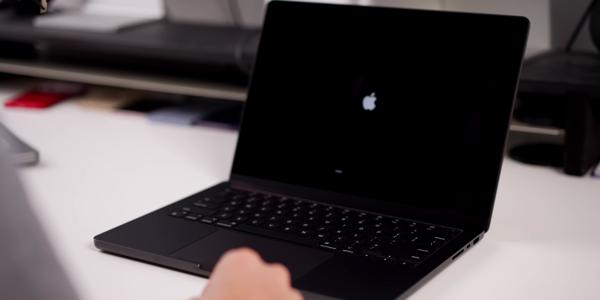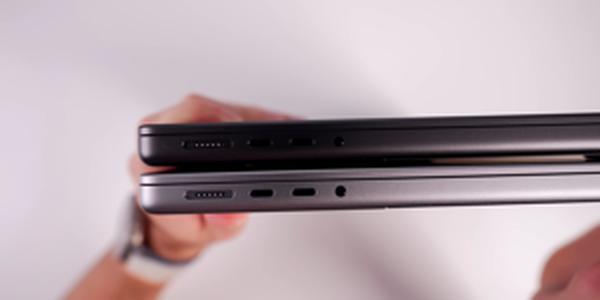My take on whether 8GB RAM is enough for the new M3 MacBook Pro (2023)
Introduction
I've been tracking the specs on the new M3 MacBooks, and Apple's claim about their 8GB unified memory is quite interesting. They suggest it can rival 16GB on other laptops. Below I try to break down the efficiency argument versus the raw capacity.
Evaluating Apple’s Claim of Efficiency

Apple's claim that the 8GB of unified memory on the M3 MacBooks is equivalent to 16GB on other systems has certainly raised eyebrows. When I first heard this, I was skeptical. But understanding Apple's unified memory architecture (UMA), it's not a simple apples-to-apples comparison. UMA enables faster memory access and higher bandwidth, theoretically making memory usage more efficient. However, I'm painfully aware that regardless of efficiency, 8GB is still just 8GB, especially when you consider it's shared between the CPU, GPU, and Neural Engine.
During my deep dive into the efficiency debate, I didn't come across any groundbreaking studies from universities or thorough technical analyses on GitHub repositories that could confirm Apple's claim of memory efficiency. Most of the consensus is built around user experiences and reviews, which, while valuable, lack the empirical rigor I'd like to see before making such claims myself.
The proof is inevitably in the proverbial pudding. Max Tech benchmarks flesh this out, showcasing that the 16GB model does perform better under heavy multitasking and memory-intensive applications. It's alarming that the 8GB model was crashing on professional software like Blender and Final Cut Pro — an indicator that in the real world, efficiency can only get you so far before capacity becomes a limiting factor.
From a positive perspective, and trying to put myself in the shoes of the average consumer, 8GB does function perfectly fine for everyday use — think web browsing, email, and media consumption. The everyday user isn't likely to push the boundaries of what the M3's unified memory can achieve. Indeed, they might experience this efficiency as fast enough for their needs, which could lend credence to Apple's statement in the eyes of the casual user.
Efficiency aside, it's impossible to ignore the drawbacks of a low memory ceiling. Power users and professionals will quickly discover the limits when running complex workflows. And it's here that the conversation pivots away from efficiency and toward capacity — you just can't compensate for a lack of RAM once you've hit that cap. This isn't solely an Apple issue, though. The broader PC market is still pushing machines with 8GB at base levels, which feels outdated when modern browsers can eat up RAM as quickly as you can open tabs.
Apple is no stranger to premium pricing for hardware upgrades, and in this light, it feels less like efficiency and more like a strategy to push consumers toward higher-margin configurations. Charging an additional $200 for what amounts to a crucial doubling of RAM feels steep, even in a market where hardware upgrades are rarely cheap. For a machine carrying the 'Pro' label, it would be reassuring to see a baseline that doesn't necessitate an immediate upgrade.
Ultimately, the UMA does have its merits, and undoubtedly some users will find the base model's performance adequate for their needs. Yet, for the MacBooks to live up to their professional designation, packing more memory — baseline 16GB at a minimum — would offer peace of mind that the machines can handle whatever task, project, or sudden surge in browser tabs you might throw their way.
Real-world Performance and User Experience

As someone who has been closely following the developments in the tech landscape, I approach the conversation about the M3 MacBook Pro’s adequacy in terms of RAM with both curiosity and a bit of skepticism. The newly announced base model sporting 8GB of RAM has certainly raised eyebrows, especially given its professional branding. In my experience, RAM is one of those components where you can feel the limitations quite tangibly once you begin to push your system.
I cannot deny the allure of the M3 chip’s promise of efficiency and performance gains. From a strictly technical standpoint, the move towards a unified memory architecture is commendable as it brings notable improvements in memory access and bandwidth. However, in real-world scenarios, the quantity of memory still matters, especially when you start multitasking or delving into more memory-intense applications.
On one hand, for everyday tasks such as web browsing, office work, and media consumption, 8GB might not impede the user's experience significantly. We have seen this with prior MacBook Air and entry-level Pro models that utilize their SSDs for paging when memory is tight. This approach can continuously mask the feeling of a memory shortage in less intense workflows.
Yet, it's important to consider the drawbacks. Having personally worked with audio production and coding, I'm acutely aware of how quickly memory can become a bottleneck. For example, running virtual machines or extensive audio plugins easily chews through RAM. The tests from Max Tech reaffirm this perspective; seeing the Base M3 struggle in Blender and Final Cut Pro with just 8GB of RAM is hardly surprising, reinforcing the notion that for certain tasks, 8GB just does not suffice.
We should consider the impact of memory limitations on the overall longevity of the device. A system's lifespan is heavily influenced by how well it can handle the progressively increasing demands of software updates and more sophisticated applications over time. While Apple Silicon maximizes the efficiency of each byte of RAM, and macOS is lauded for its memory management, it does not change the fact that more complex tasks and future-proofing call for more memory.
While the M3 MacBook Pro with 8GB RAM will serve the casual user quite faithfully, I have reservations about its suitability for professionals requiring more from their machines. For them, opting for a 16GB or 24GB configuration will be almost essential – albeit at an additional cost (Apple Store).
It?s clear that the M3 MacBook Pro's base offering is positioned as a gateway into the Pro ecosystem, possibly aiming more towards prosumers rather than hardcore professionals. Despite my mixed feelings, I acknowledge the machine's potential. It does deliver remarkable performance for its spec on basic tasks, and comes complete with an impressive screen and a versatile array of ports for most day-to-day needs.
For an insightful look into how unified memory can boost a system's performance, albeit with the right amount of it, a complementary read from a technical university or trusted research paper could be beneficial. However, such specifics are not within scope here, but I might suggest looking at university-led research into computer performance for a deep-dive into the subject.
Ultimately, my position falls slightly on the positive side for the average consumer, thanks to the strides Apple has made with its integrated hardware and software optimization – provided one remains within the scope of intended use. However, for the power users among us, the limitations are enough to warrant serious consideration before investing in the base model of Apple's latest professional offering.
Professional Use vs Prosumer Expectations

With the M3 MacBook Pro, Apple has stirred quite a discussion surrounding their definition of what constitutes a Pro device. As someone who’s followed Apple's evolution and relied on their hardware for professional tasks, I've come to appreciate the finesse they bring to hardware-software integration. The M3 marks a new era with promises of greater efficiency and the expectation of superior performance, but it collides with an uncomfortable reality: the base model offers a mere 8GB of RAM.
In terms of daily use, I've found that macOS does indeed seem to manage memory more efficiently than many other operating systems. Memory compression and a unified memory architecture are not just marketing jargon; they contribute to snappier multitasking on macOS, even with less RAM. There's real technology at work here that does, to some extent, justify Apple's perspective on memory usage. I can attest to the fact that my workflows, which include a lot of coding and light media editing, have run relatively smoothly on an 8GB machine in the past. For the prosumer — a user who hovers in the nebulous space between consumer and professional — the memory limitation might not pose an immediate concern. Many of these users are looking for the best screen, portability, and a reliable ecosystem that enables a variety of less intensive tasks like browsing and media consumption to be carried out with ease.
However, the 'Pro' label sets a certain expectation. When you’re working with high-resolution video editing, 3D modeling, or running multiple virtual machines, the limitations of 8GB are not an imagined constraint; they're quite tangible. While an 8GB model could handily serve those writing papers, managing spreadsheets, or casually editing photos, it becomes quickly apparent in memory-intensive applications that additional RAM matters. In my personal experience, upgrading to 16GB or more has provided a more comfortable buffer for heavier tasks, allowing apps like Final Cut Pro and Adobe Creative Suite to run with fewer hiccups.
I'm conscious of the trade-offs Apple has chosen to make: a gorgeous display, a potentially more power-efficient chip in the M3, and the appeal of a cutting-edge piece of technology. Those positives, though, are harder to appreciate when I think about how quickly I could eat through 8GB just by opening up my regular suite of applications.
For many professionals, eroding performance when they're deep in the trenches isn't merely frustrating — it's counterproductive. There's also the consideration of future-proofing. Software and its demands only grow with time, not diminish. Thus, while 8GB may suffice now for particular users, it may choke on tomorrow’s software updates or more sophisticated tasks that one might not anticipate when making their purchase.
While the tech within is unquestionably impressive, and the allure of the new M3 silicon can't be ignored, the baseline memory offering feels anachronistic for a 'Pro' branded device amid the specs wars of 2023. As part of a larger ecosystem that has increasingly blurred the lines between devices, ensuring a unified experience across hardware comes across as a bare minimum, not a selling point. That said, Apple knows its audience well, and for many, the base model will fit like a glove, gracefully handling the everyday, while for others, it’ll be a prompt to consider more suitably specced alternatives or upgrades within the Apple lineup.
Cost Analysis and the Value Proposition

In assessing the value proposition of the M3 MacBook Pro with just 8GB of RAM, we must consider cost and potential use cases. While I empathize with the backlash regarding the base model's RAM, I find that there's some merit to the argument for efficiency given the unified memory architecture—a point which Apple strongly advocates.
Technically, efficiency in memory usage is a plausible argument. Apple's SoCs do benefit from shared memory that can, to a certain extent, overcome the limitations of lower RAM capacity. However, the fact that this model starts at $1,599 does raise questions about value for money, especially when refurbished or previous generation models with more RAM exist at similar price points. I've always seen a degree of value in the sustainability offered by refurbished models, both in terms of cost and environmental impact.
Yet, the new M3 MacBook Pro isn't entirely without its merits. For users who prioritize a lighter workload and benefit from the latest engineering such as the M3 chip, there's an argument to be made for the purchase. This model could serve adequately for tasks like writing, web browsing, and even some light photo editing. It's paramount to remember, though, that for any sort of heavy multitasking or high-resolution content creation, the 8GB is likely to be a bitter pill to swallow, pushing users towards costly upgrades.
The upcharge to 16GB at an additional $200 seems steep, especially when contrasted against the cost of DDR5 RAM in the self-build PC market. While it's true that Apple's unified memory isn't directly comparable to traditional RAM, it is still a price premium that's hard to justify when the cost of silicon—from a manufacturing perspective—is dropping. For reference, my gaming rig with 64GB of DDR5 RAM cost significantly less in terms of RAM per gigabyte.
I've noticed arguments centering around the idea of "future-proofing"—a concept I mostly align with. As app requirements balloon and software becomes more complex, longevity in tech purchases is crucial. There's an argument to be made for maxing out RAM to extend the laptop's relevance, considering that Apple typically supports their hardware for considerable periods. In fact, for those considering whether the latest models are worth the investment, the article Is the Macbook Pro M2 14 inch still worth it? My view (2023) offers some insightful perspectives.
For those concerned about developer support, consider that the Github community and other open-source repositories often feature optimizations and software specific to the hardware—though, whether this will offset the lower RAM in the long run is questionable.
The consensus? If this were a non-"Pro" model, both the price point and the specs would make more sense. The issue isn't that the M3 MacBook Pro with 8GB of RAM can't perform; it's that the performance per dollar doesn't match up when comparable or better options are available, whether that's refurbished models or PCs.
I'm skewed towards the positives of the unified memory architecture but wary of the limitations that 8GB imposes. It's an interesting juncture for Apple and its consumers, where decision-making will depend largely on individual requirements, budget constraints, and long-term usage expectations. The 8GB model is a hard sell for pro users, but arguably, there's a market that will find this model an optimal blend of cutting-edge technology and functional capability for daily, less-intensive work.
Share